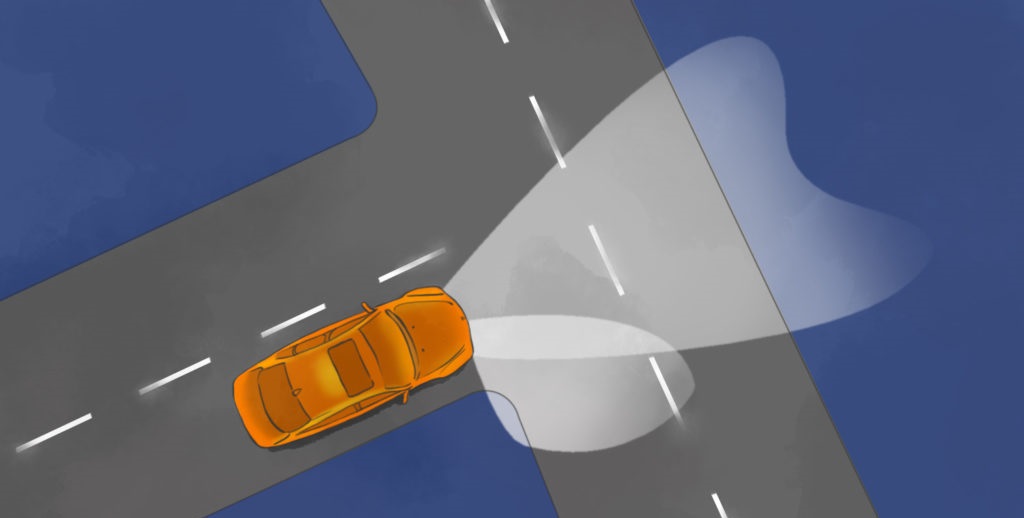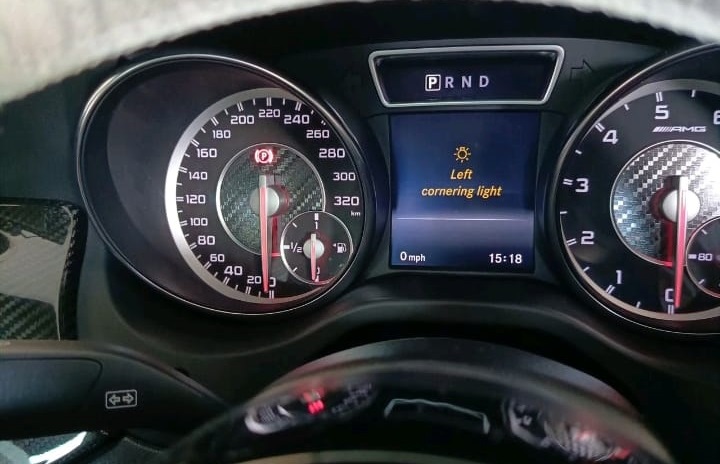Table of Contents
Left Cornering Light Mercedes Issue in the Mercedes-Benz A-Class W176
The Left Cornering Light Mercedes issue is a common complaint among owners of the Mercedes-Benz A-Class W176. This problem typically manifests as a warning light on the dashboard, indicating a malfunction in the vehicle’s cornering light system.
In this article, we will delve into a specific case study to explore the root causes, diagnostic process, and effective solutions for this issue. Understanding this problem is crucial for both technicians and vehicle owners to maintain optimal vehicle performance.
Vehicle Overview: Mercedes-Benz A-Class W176
The Mercedes-Benz A-Class W176 is a popular model known for its advanced safety features, including the cornering light system. This system enhances visibility during turns by illuminating the area in the direction the vehicle is heading. However, like any sophisticated technology, it can experience malfunctions that require attention.

Complaint: Left Cornering Light Mercedes
A vehicle came into the workshop with a specific complaint: the Left Cornering Light Mercedes warning had appeared on the dashboard. This warning is typically triggered when the cornering light fails to function correctly, which can compromise safety, especially during nighttime driving or in poor weather conditions.

Case Study: Diagnosing the Issue
As a skilled automotive technician, I was tasked with resolving the Left Cornering Light Mercedes issue for a customer. The initial step in the diagnostic process involved connecting the vehicle to Mercedes-Benz’s advanced diagnostic tools. These tools provide real-time data and pinpoint the exact location of the fault within the vehicle’s electrical system.
Upon running the diagnostic scan, the results indicated an issue with the headlamp bulb, specifically the left cornering light. Given the nature of the problem, I proceeded to inspect the bulb visually. It was immediately evident that the bulb had blown, a common occurrence that can lead to the “Left Cornering Light Mercedes” warning.

Repair Process
Following the manufacturer’s guidelines, I carefully replaced the faulty headlamp bulb. It is essential to use OEM (Original Equipment Manufacturer) parts in such repairs to ensure compatibility and longevity. After the replacement, I conducted a thorough post-repair test to verify that the Left Cornering Light Mercedes warning was no longer present. The vehicle’s lighting system was now fully operational, and the issue was resolved.



Understanding the Root Cause
In my experience, issues like the Left Cornering Light Mercedes are often caused by heat damage within the headlamp assembly. The high temperatures generated by the bulbs can lead to cracked or damaged wiring over time. If these issues are not addressed promptly, they can result in short circuits, causing more extensive damage to the vehicle’s electrical system.
Preventative Measures
To prevent recurring problems with the Left Cornering Light Mercedes, I recommend regular inspections of the wire harness inside the headlamp assembly. During these inspections, look for signs of wear and tear, such as cracked insulation or exposed wires. Addressing these issues early can prevent short circuits and extend the life of the headlamp assembly.
Conclusion
The Left Cornering Light Mercedes issue in the Mercedes-Benz A-Class W176, while common, is easily diagnosable and repairable with the right tools and expertise. By understanding the potential causes, such as heat damage and wiring issues, and following a methodical diagnostic process, technicians can effectively resolve this problem.
Regular maintenance and inspections are key to ensuring the long-term reliability of the vehicle’s lighting system, providing peace of mind for both technicians and vehicle owners.
What is the cornering light?
Cornering Light Overview:
A cornering light is an additional lighting feature found in many modern vehicles, including those from Mercedes-Benz. Its primary purpose is to enhance visibility when the vehicle is turning, especially in low-light conditions. Unlike regular headlights that illuminate the area directly in front of the vehicle, cornering lights are designed to project light to the side, specifically in the direction of the turn.

How It Works:
- Activation: Cornering lights typically activate automatically when the vehicle’s turn signals are engaged or when the steering wheel is turned beyond a certain angle. In some vehicles, they may also activate at low speeds, such as when maneuvering in parking lots.
- Position: These lights are usually integrated into the vehicle’s headlamp assembly or positioned separately in the front bumper or fog lights.
- Functionality: The cornering light provides additional illumination to the area where the driver is about to steer, reducing blind spots and making it easier to see pedestrians, cyclists, or obstacles that might not be visible with standard headlights alone.
Benefits:
- Improved Safety: By illuminating the direction of the turn, cornering lights help drivers navigate corners and curves more safely, particularly in poorly lit environments or during nighttime driving.
- Enhanced Visibility: They enhance overall visibility, making it easier for drivers to detect potential hazards early.
Types of Cornering Lights:
- Static Cornering Lights: These are fixed lights that activate when turning the steering wheel or using the turn signal. They don’t move or adjust their angle but provide a broad light beam in the direction of the turn.
- Dynamic Cornering Lights: More advanced systems feature lights that swivel or adjust based on the vehicle’s speed and steering angle. These lights actively follow the direction of the turn, providing even more precise illumination.
In summary, cornering lights are a critical safety feature that improves a driver’s ability to see and react to obstacles while turning, contributing to safer driving experiences, especially at night or in challenging road conditions.
Are cornering lights important?
Yes, cornering lights are important for several reasons, particularly when it comes to enhancing driving safety and improving visibility in challenging conditions. Here’s why they matter:
1. Enhanced Visibility While Turning
- Cornering lights provide additional illumination in the direction the vehicle is turning. This helps drivers see what’s around the corner or in their blind spots, which is particularly useful in low-light conditions or on winding roads.

2. Increased Safety
- By lighting up areas that standard headlights might miss, cornering lights reduce the risk of accidents. They help drivers spot potential hazards such as pedestrians, cyclists, or obstacles that could be difficult to see without the extra light.
3. Better Navigation in Tight Spaces
- In urban environments or when parking in dimly lit areas, cornering lights can make it easier to navigate tight spaces. They help drivers judge distances more accurately and avoid scrapes or collisions with curbs, walls, or other vehicles.
4. Improved Confidence in Night Driving
- For many drivers, nighttime driving can be stressful, especially on unfamiliar or poorly lit roads. Cornering lights boost confidence by providing a clearer view of the road ahead and around corners, making for a more comfortable and secure driving experience.
5. Adaptive Lighting Systems
- In vehicles equipped with advanced adaptive lighting systems, dynamic cornering lights can adjust their angle based on the vehicle’s speed and steering input. This creates an even safer driving environment by ensuring that the road is well-lit in the direction of travel.
6. Legal and Insurance Considerations
- In some regions, cornering lights are part of a vehicle’s safety features that contribute to its overall safety rating. Having them in working condition can be crucial for passing safety inspections or avoiding potential insurance issues.
Conclusion:
Cornering lights are an essential safety feature that can significantly improve a driver’s ability to navigate turns and avoid potential accidents. While they may seem like a small addition, their role in enhancing visibility and safety makes them a valuable feature in any vehicle.
— Salim, Mercedes Expert
Independent specialist in Mercedes-Benz diagnostics, CAN Bus analysis, troubleshooting case studies, and EV systems.







Leave a Reply